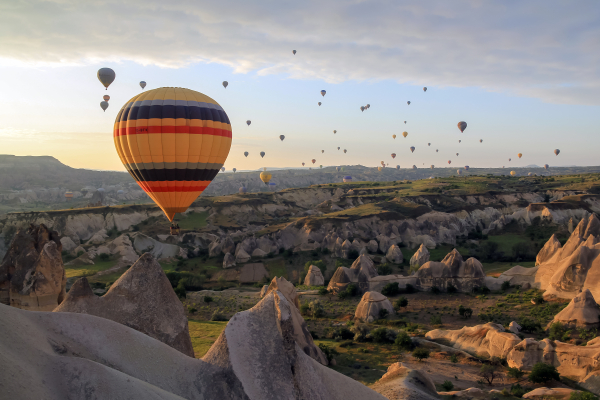- Your country
- Europa
-
- Amstetten(7)
- Bad Schallerbach(1)
- Baden(4)
- Berg(1)
- Braunau am Inn(5)
- Bregenz(3)
- Bruck an der Mur(1)
- Graz(4)
- Hartberg(1)
- Innsbruck(5)
- Kemmelbach(1)
- Kitzbühel(4)
- Klagenfurt(5)
- Krems an der Donau(1)
- Kufstein(5)
- Leibnitz(1)
- Lienz(1)
- Liezen(1)
- Linz(5)
- Oetz(1)
- Punitz(1)
- Radstadt(1)
- Salzburg(5)
- St Polten(2)
- Steiermark(1)
- Steyr(1)
- Steyregg(1)
- Traun(3)
- Vienna(30)
- Villach(5)
- Völkermarkt(1)
- Wels(5)
- Wien(1)
- Wiener Neustadt(4)
-
- Aalst(1)
- Aarschot(2)
- Affligem(1)
- Anderlecht(5)
- Antwerp(11)
- Antwerpen(1)
- Arlon(6)
- Ath(2)
- Aubange(5)
- Bastogne(2)
- Blankenberge(1)
- Bruges(5)
- Brussels(24)
- Charleroi(5)
- Deinze(3)
- Dendermonde(1)
- Diest(2)
- Etterbeek(5)
- Geel(1)
- Genk(5)
- Gent(8)
- Geraardsbergen(1)
- Grimbergen(2)
- Hasselt(5)
- Heusden- Zolder(2)
- Ieper(1)
- Izegem(1)
- Knokke(4)
- Kortrijk(3)
- La Louviere(2)
- Leuven(5)
- Liege(4)
- Limburg(4)
- Lommel(1)
- Mortsel(1)
- Oostende(1)
- Turnhout(1)
-
- Chelyabinsk(1)
- Dubna(4)
- Gelendzhik(1)
- Irkutsk(1)
- Kaliningrad(1)
- Kazan(4)
- Krasnodar(3)
- Krasnoyarsk(1)
- Maykop(1)
- Moscow(53)
- Nizhny Novgorod(4)
- Novosibirsk(1)
- Omsk(1)
- Penza(1)
- Rostov-on-Don(2)
- Saint Petersburg(13)
- Samara(1)
- Saratov(1)
- Serpukhov(2)
- Sevastopol(3)
- Sochi(5)
- Stavropol(1)
- Surgut(1)
- Tyumen(2)
- Ufa(2)
- Vladivostok(3)
- Yekaterinburg(11)
-
- Alicante(12)
- Barcelona(141)
- Benalmadena(1)
- Benidorm(7)
- Castellón de la Plana(1)
- Denia(1)
- Estepona(1)
- Fuengirola(4)
- Ibiza(54)
- Jerez de la Frontera(1)
- Lanzarote(1)
- Las Palmas de Gran Canaria(5)
- Madrid(79)
- Malaga(10)
- Marbella(55)
- Murcia(1)
- Oviedo(1)
- Palma de Mallorca(55)
- Puerto Banus(3)
- Seville(1)
- Tarragona(1)
- Tenerife(10)
- Torrevieja(6)
- Valencia(10)
- Vigo(1)
- Zaragoza(1)
- Worldwide
Categories
Enchanting Cappadocia: Top Destinations You Must Visit
 The landscapes of Cappadocia resemble scenes from a sci-fi movie. It feels as if you've landed on another planet—so unique and otherworldly are the region's terrains and multi-colored mountains. Here's what to see and how to get to Cappadocia.
The landscapes of Cappadocia resemble scenes from a sci-fi movie. It feels as if you've landed on another planet—so unique and otherworldly are the region's terrains and multi-colored mountains. Here's what to see and how to get to Cappadocia.Overview of Cappadocia
Cappadocia is a place with extraordinary landscapes, a unique atmosphere, and amazing people. Distant from major resorts, it offers a stark contrast to other regions: it's hot and dry here with no sea in sight, replaced instead by otherworldly scenery, underground cities, rock monasteries, and iconic floating balloons.
The history of Cappadocia is seemingly endless. Archaeological excavations reveal that ancient peoples inhabited this part of Asia Minor. The region was part of the Persian Empire, engaged in numerous wars, and was under Roman and Byzantine control before becoming Ottoman territory in the 16th century, with Turks mainly populating the area since then.
Cappadocia is famed for its rocky terrain and cave complexes. These provided refuge from invaders and later housed early Christians—the Christian culture spread here from the 1st century AD. Volcanic eruptions millions of years ago created a unique tuff cover that's easy to work with. The soft rock made it easy to build reliable shelters, which hermits and religious figures particularly loved. Monasticism and asceticism were born in Cappadocia. Today, the underground cities are part of UNESCO's World Heritage and are Cappadocia's main attractions.
When to Visit
The region attracts travelers year-round, but the best months are June and September. Late summer can be unbearably hot, while late autumn and winter offer fewer chances to see the balloons but lower prices and fewer crowds, ideal for budget-conscious travelers and those who dislike queues. In spring, Cappadocia hosts the Cappadocia International Balloon Festival, a vibrant event with concerts, shows, fairs, and other entertainment. Autumn brings ripe grapes for quality local wine production.
Top Attractions in Cappadocia
Göreme and Göreme National Park
A must-visit is the small town of Göreme, the heart of the region where all travelers converge. Göreme serves as a gateway to other notable sites in Cappadocia but is also intriguing in its own right. The town offers hotels for all tastes and budgets, shops, cafes, and restaurants, with surreal stone pillars, terraces, mosques, and winding paths adding color to the panorama.
From the town center, you can walk to Göreme National Park. The vast area of the ancient settlement features famous rock cities and valleys of Cappadocia: Love, Rose, Red, and Pigeon, among others.
The jewel of Göreme National Park is the open-air museum. This remarkable location is renowned for its religious structures built at the dawn of Christianity, with churches decorated in Byzantine style, adorned with scenes from the Old and New Testaments. Despite the entrance fee and crowds in the hot season, visitors say the frescoes and ancient dwellings are worth it.
Many rock churches have been preserved in Göreme, but only some are accessible. Visitors particularly note the Dark Church, which served as a pigeon house for a long time. Due to the lack of light, the Byzantine frescoes are well-preserved. However, there is a fee for entry, and photography is prohibited.
Kayseri
For many travelers, the introduction to Cappadocia begins in Kayseri, home to one of the region's airports, making it convenient to reach key attractions. If you stay and explore the city, you'll find much to admire: in ancient times, Kayseri was the residence of Cappadocian kings, so the surroundings are rich with ruins, and the old quarters are strikingly authentic. The contrast between ancient buildings and modern developments is particularly impressive.
In the city center, you'll find Cumhuriyet Square, recognizable by the massive walls of an ancient castle, a clock tower, and a statue of Atatürk. The fortress has stood since Roman times, protecting against Persian raids. Today, it houses a museum and a cafe. Kayseri's panorama is dotted with madrasahs and mosques, with the Hunat Hatun Mosque, over ten centuries old, being one of the most intriguing and largest. This site is notable not only for its Seljuk-era architecture but also for its surrounding facilities, including a hammam, museum, and bookstore.
After exploring cultural monuments, you can sample regional cuisine in local eateries. Notable dishes include Kayseri mantı—dumplings served with yogurt and mint, Nevzine dessert with walnuts, and Kayseri tiridi—layered dough with pieces of chicken generously topped with sauce. Restaurants and cafes also offer testi kebab—lamb with vegetables cooked in a clay pot, a signature dish of Cappadocia.
Kaymakli and Derinkuyu Underground Cities
For seasoned travelers seeking adventure, Cappadocia offers thrilling experiences. Visiting Kaymakli underground city will give you a rush of adrenaline. This subterranean labyrinth spans eight levels, housing up to 15,000 people by some estimates. Exploring the preserved tunnels and learning about the past with an organized group is recommended, and bring a flashlight. For the more daring, there's Derinkuyu, Cappadocia's largest underground city with numerous levels—scholars still debate the exact number of tiers and living conditions.
It is unknown how often ancient people surfaced or if they did at all. Over time, Derinkuyu became a fully equipped refuge with houses, stables, barns, bakeries, warehouses, chapels, workshops, a winery, and other living necessities.
Uchisar Castle and Pigeon Valley
Within walking distance of Göreme lies another historic town. Uchisar's main attraction is its fortress, which served as a lookout point for centuries. From the summit, you could monitor enemy movements and alert residents of impending danger.
Today, the massive rock is an observation point for travelers—Uchisar Castle's viewpoint offers vistas of ancient volcanoes and all of Cappadocia. The entrance to the top is fee-based; you can walk or drive up narrow rocky paths, although the road isn't comfortable, and you'll need to pay for parking. In July 2024, the entrance fee is 250 Turkish lira.
On the way to Uchisar, you can visit another natural attraction of Cappadocia. Pigeon Valley is famous for its numerous bird dwellings in the rocks. Pigeons were bred for their droppings, used as fertilizer. Today, they continue to nest in the cliffs and pose for visitors.
Cavusin Village and Rose Valley
Cavusin Village has a long history: its cave labyrinths sheltered Christians from persecution, Turks lived here, and a powerful earthquake in the mid-20th century partially destroyed the town. The remaining rock dwellings attract travelers, and the village is especially popular among pilgrims—Cavusin is home to the oldest church of St. John the Baptist. This historical monument dates back to the 5th century, with ancient frescoes and carvings still visible today.
Besides cultural sites, Cavusin also boasts a natural attraction. Rose Valley stretches from the town to Göreme, named for its rocks that turn a pinkish hue at sunset. The route is challenging but passes through vineyards, religious structures, pigeon houses, and canyons. The Sunset Point offers panoramic views of Cappadocia.
Avanos and Guray Ceramic Museum
Avanos is a town filled with creativity: it sits by a river where red clay has been extracted for centuries, the primary product and livelihood of its people. Clay-working secrets have been passed down through generations, and today the town is famous for its many workshops and ceramic products.
For inspiration, visit the Guray Ceramic Museum. The owners, a family of potters, have set up an exhibition of ancient artifacts, from Roman amphoras to modern ceramics. Some of the oldest pieces date back to the 5th millennium BC.
The exhibition is notable not only for its ceramic items from various eras but also for its unique location—it is the only such museum situated in underground caves. During your visit, you can observe a master at work and buy souvenirs.
Travelers also note the architecture of Avanos' historical center, where traces of Ottoman buildings remain. After exploring the old village, you can visit a carpet weaving workshop and try your hand at tying knots. Turkish baths and local eateries with intriguing regional dishes provide relaxation after a busy day.
Love Valley
Cappadocia's iconic rock formations often appear in photos. Most likely, they were taken in Love Valley, famous for its tuff cones that resemble mushrooms, fingers, or something else. Travelers recommend exploring the valley on foot; the Martian landscapes and rock formations are best seen up close. The cones form canyon walls, guaranteeing breathtaking views.
news
More news- Your country
- Europa
-
- Amstetten(7)
- Bad Schallerbach(1)
- Baden(4)
- Berg(1)
- Braunau am Inn(5)
- Bregenz(3)
- Bruck an der Mur(1)
- Graz(4)
- Hartberg(1)
- Innsbruck(5)
- Kemmelbach(1)
- Kitzbühel(4)
- Klagenfurt(5)
- Krems an der Donau(1)
- Kufstein(5)
- Leibnitz(1)
- Lienz(1)
- Liezen(1)
- Linz(5)
- Oetz(1)
- Punitz(1)
- Radstadt(1)
- Salzburg(5)
- St Polten(2)
- Steiermark(1)
- Steyr(1)
- Steyregg(1)
- Traun(3)
- Vienna(30)
- Villach(5)
- Völkermarkt(1)
- Wels(5)
- Wien(1)
- Wiener Neustadt(4)
-
- Aalst(1)
- Aarschot(2)
- Affligem(1)
- Anderlecht(5)
- Antwerp(11)
- Antwerpen(1)
- Arlon(6)
- Ath(2)
- Aubange(5)
- Bastogne(2)
- Blankenberge(1)
- Bruges(5)
- Brussels(24)
- Charleroi(5)
- Deinze(3)
- Dendermonde(1)
- Diest(2)
- Etterbeek(5)
- Geel(1)
- Genk(5)
- Gent(8)
- Geraardsbergen(1)
- Grimbergen(2)
- Hasselt(5)
- Heusden- Zolder(2)
- Ieper(1)
- Izegem(1)
- Knokke(4)
- Kortrijk(3)
- La Louviere(2)
- Leuven(5)
- Liege(4)
- Limburg(4)
- Lommel(1)
- Mortsel(1)
- Oostende(1)
- Turnhout(1)
-
- Chelyabinsk(1)
- Dubna(4)
- Gelendzhik(1)
- Irkutsk(1)
- Kaliningrad(1)
- Kazan(4)
- Krasnodar(3)
- Krasnoyarsk(1)
- Maykop(1)
- Moscow(53)
- Nizhny Novgorod(4)
- Novosibirsk(1)
- Omsk(1)
- Penza(1)
- Rostov-on-Don(2)
- Saint Petersburg(13)
- Samara(1)
- Saratov(1)
- Serpukhov(2)
- Sevastopol(3)
- Sochi(5)
- Stavropol(1)
- Surgut(1)
- Tyumen(2)
- Ufa(2)
- Vladivostok(3)
- Yekaterinburg(11)
-
- Alicante(12)
- Barcelona(141)
- Benalmadena(1)
- Benidorm(7)
- Castellón de la Plana(1)
- Denia(1)
- Estepona(1)
- Fuengirola(4)
- Ibiza(54)
- Jerez de la Frontera(1)
- Lanzarote(1)
- Las Palmas de Gran Canaria(5)
- Madrid(79)
- Malaga(10)
- Marbella(55)
- Murcia(1)
- Oviedo(1)
- Palma de Mallorca(55)
- Puerto Banus(3)
- Seville(1)
- Tarragona(1)
- Tenerife(10)
- Torrevieja(6)
- Valencia(10)
- Vigo(1)
- Zaragoza(1)
- Worldwide
















